.jpg)
Smart EQ Forfour review
.jpg)
Introduction
No, not the tiny two-seater Smart Fortwo. This is its bigger brother, stretched a little to accommodate an extra two passengers, and imaginatively named Forfour. Cos it’s for four peo… oh, you get it.
It’s more than half a metre shorter than the Vauxhall Corsa, but has expanded just a little too much from the famous two-seater Smart to be able to park anywhere it likes. Still, despite its diminutive dimensions, there’s the promise of seating for four, plenty of gadgets and an electric motor that ensures zero-emission driving.
Select's rating score* - 2.5 / 5
At a Glance
Smart has done more than simply extend the two-seater model, enlisting the help of Renault and its experience with the Twingo, to create a four-seater model that doesn’t compromise too much on practicality.
Granted, Renault dropped its Twingo twin recently, persevering with the more conventional Zoe electric car, but Smart sees no reason to stop having fun with the Forfour.
Its Renault heritage should mean it's a relatively conventional car, albeit powered by an electric motor (which, let’s be honest, isn’t unconventional any more) and wrapped up in Smart’s quirky style.
That should give you the best of both worlds, assuming there’s enough commitment from the French and Germans to follow through on the promise. But, whatever boxes the fashion-conscious, eco-friendly car ticks, it’s still got to do the job of being a decent car.
There’s one electric motor and three trim levels to choose from, so it’s not going to be complicated finding out if it’s up to the job.
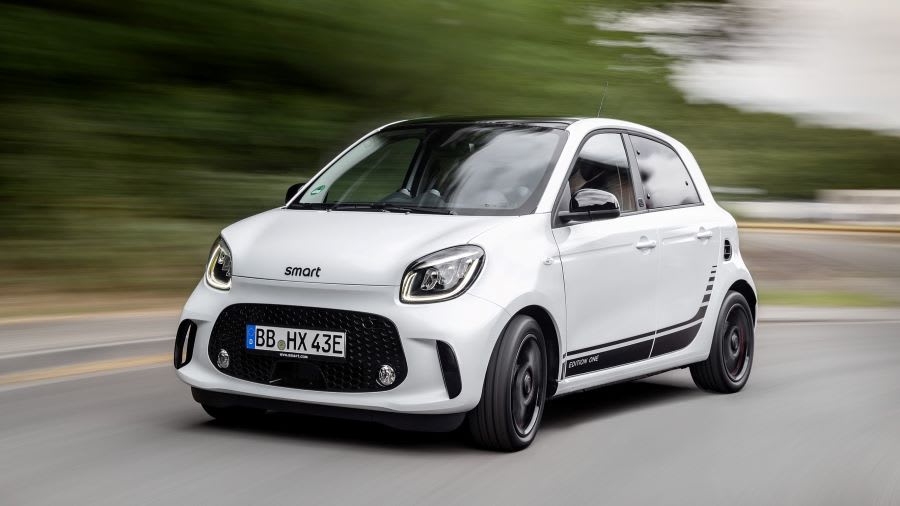
Key Features
There’s a visible, stand out feature of the Forfour and every Smart we’ve seen so far - the Tridion. This is an external safety cell that wraps its occupants in a strong box that keeps them safe in an impact, letting everything else compress, crumple and crush to absorb as much energy as possible.
These things are normally hidden from view, pieces of elaborate but ultimately boring engineering that buyers usually aren’t bothered by. Yes, the EuroNCAP scores are important, but few care about how a car gets those scores.
Smart goes the other way and makes a big thing of just how safe its cars are, frequently releasing videos of them being hurled at speed into solid objects, barriers and even a Mercedes-Benz S-Class.
As if to reinforce the point further, the C-shaped cell running from the front of the car under and around the doors, and then up to the roof, can be painted in a range of bold colours, matching or contrasting with the rest of the car.
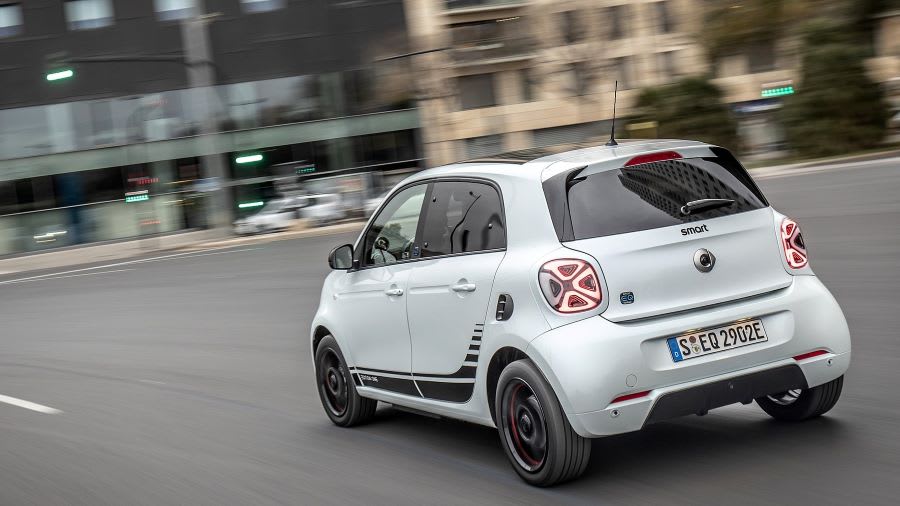
Performance and Drive
It’s fair to say that the Forfour isn’t designed for hurtling across forest roads, offering a rally-car-like experience, even though the rear-mounted motor drives the rear wheels - just like a Porsche 911.
With just 82hp available, performance is rather pedestrian, the car creeping to 62mph in 12.7 seconds before reaching a maximum speed of just 81mph.
However, what that doesn’t explain is just how zesty the Forfour feels in town. Anything up to 30mph or so is dealt with in a blur of electricity-fed torque, making the car feel far more rapid than the numbers suggest.
It’s diminutive size also makes it positively entertaining to navigate congested urban areas - any gap becomes a target, a space just big enough to squeeze the Forfour into and gain a tiny advantage as you make your way home.
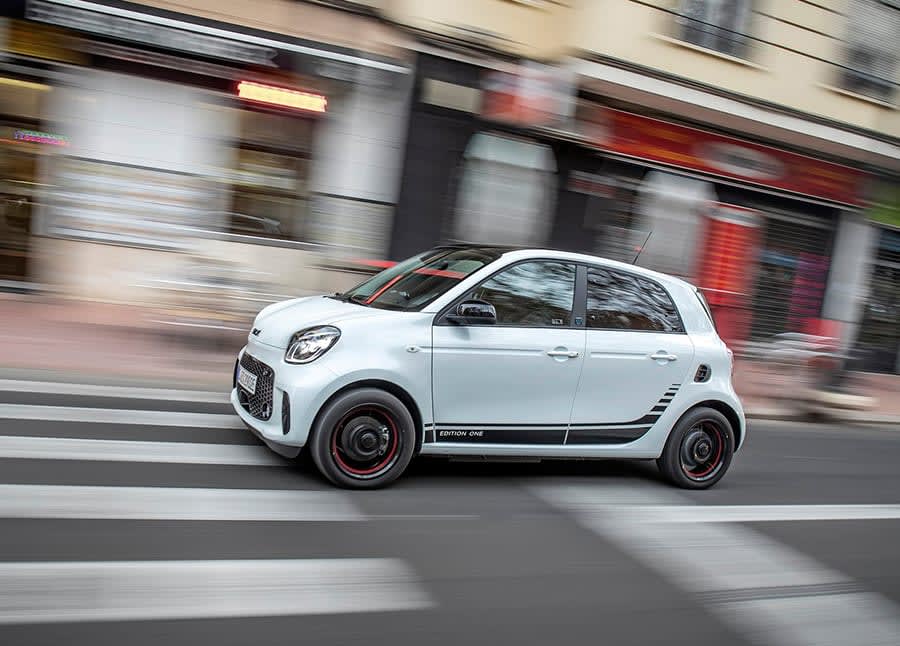
Elsewhere, it’s not so compelling. The Forfour struggles with bumps in the road Not just big bumps or little bumps, not just surface cracks or manhole covers, but literally everything. Speed bumps are a particular pain, which is disappointing for something built for the city.
Hit the open road and there’s little to get excited about. There’s plenty of body roll, and the lightweight steering that lacks any real feedback from the road combines with that to create a level of uncertainty. However, the stability control programme is incredible, intervening rapidly if there’s any hint that there might be something going awry.
Despite all that, the suspension copes with bumpy roads better at speed. It’s at speed that it is at its least confident though, and also where it will eat into its battery range quickly. It’s an engineering decision that just doesn't make sense.
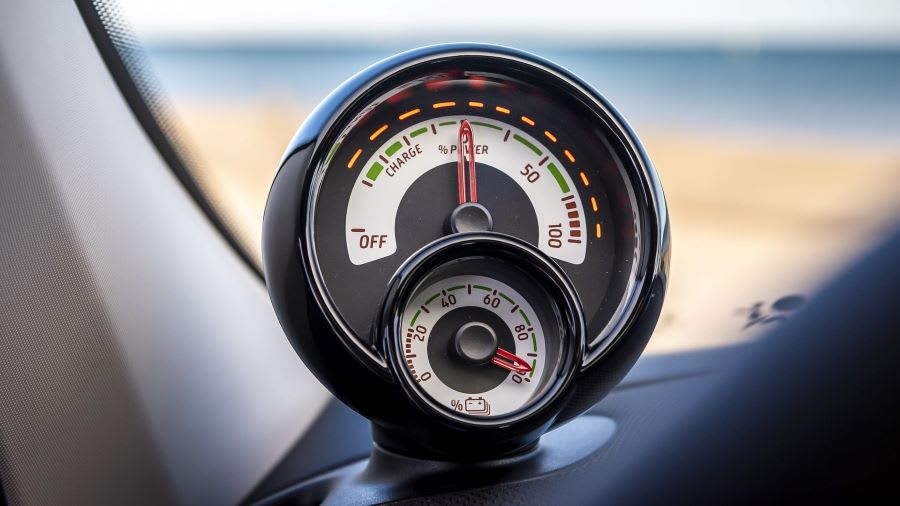
Running costs
An electric car should be cheap to run - you won’t need to visit petrol stations and spend a fortune on fuel although, if you’re out and about charging a lot, you’ll replace that spending with coffee and cake from Starbucks.
Unless you’re sticking in the city, you'll need to charge up a lot, as the range is just 80 miles. Allow for cold weather, demanding roads and a passenger or two and it’s conceivable that you coil see that drop to as low as 50 miles, which isn’t much at all. If range-anxiety resonates strongly with you, have a glance at our top longest range electric cars of the year!
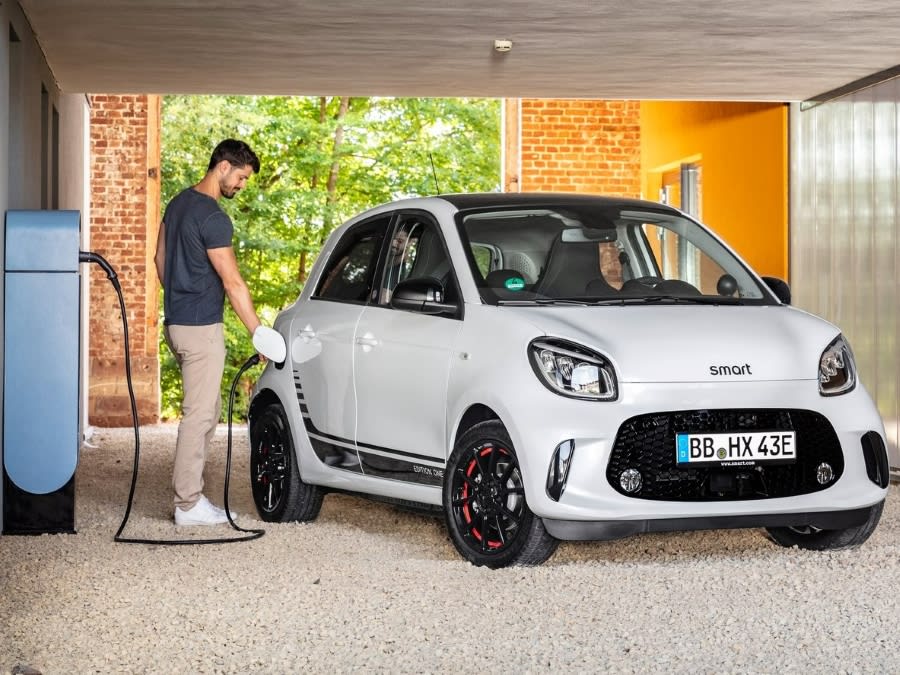
Recharging at home is reasonably quick, though, with a home charger filling the car to the virtual brim in a little under three and a half hours, while even resorting to a three-pin plug makes for an overnight-stay friendly eight hours or so, and shouldn’t cost you more than around £3. Rapid charging is limited to 22kW, which translates to filling the car from 10% to 80% in about 40 minutes. Make sure to pick the right charger for you and reference our electric car charger guide. If charging at home isn't an option, or you're on the go a lot, we've got the solution.
Beyond fuel costs, the Smart should be cheap as chips. Electric cars require less maintenance than a petrol or diesel-powered model, car tax is set at zero, and you’ll be exempt from congestion charges across the country.
Of course, that’s got to be balanced by a high purchase price. It’s competitive with its rivals, though, and lease costs are surprisingly low when compared to other options.
Emissions
There’s no engine and no fossil fuels are being burned in the Smart, so there are no emissions from the car itself.
That means that the car tax bill is set at zero, and company car users will only be facing a BIK burden of 2% (as of April 2022). But that translates to a monthly company car tax bill of less than a tenner a month!
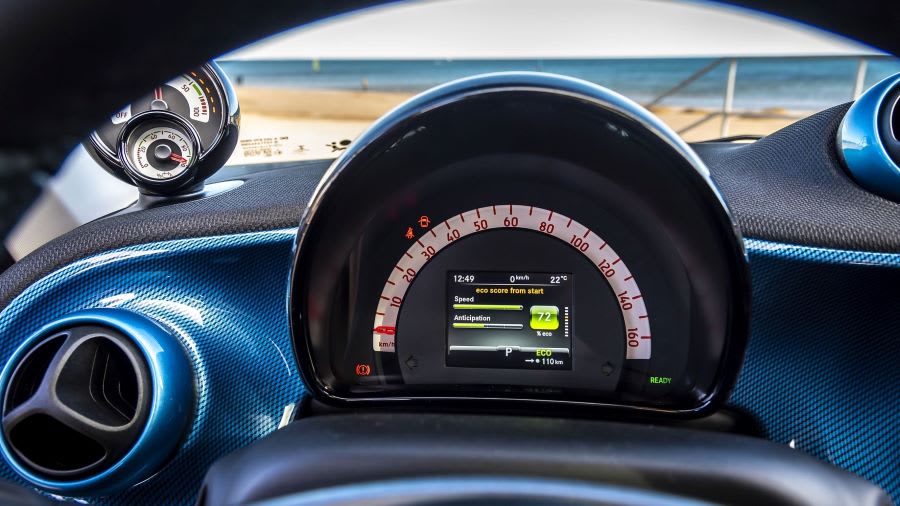
With just the pure-electric model available, there are no alternative models with higher rates, no low-emission or high-emission models, and no variable tax rates. It’s just a case of picking the trim level you want and going motoring.
Interior
Despite its small proportions, you sit quite high in the Forfour and have quite a good view of the road ahead. The rear pillars and letterbox window restrict rear views a little, but there are parking sensors on every model so you should be fine when parking.
The front of the cabin is interesting, with a circular theme dominating. An oversized instrument binnacle provides an interesting digital display showing the most vital pieces of information you’ll need. That’s matched by an 8.0-inch infotainment screen that’s mounted proud of the dashboard.
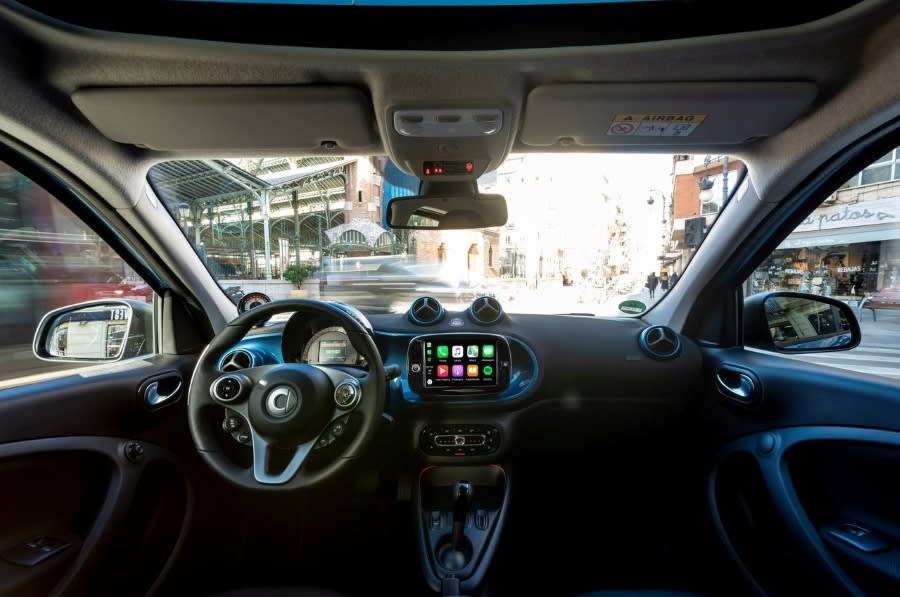
Faux carbon fibre, textured plastics, plush fabrics, matt finishes, polished plastics and coloured trim lines contrast everywhere, but it all comes together surprisingly nicely. Still, it’s quirky rather than elegant, so your personal style might not match.
Technology
It’s a good job that Smart has finally added Apple CarPlay and Android Auto to its infotainment system, as the Renault-based software that’s on there as standard is some way off the best in class.
It’s got all the acronyms you need, including DAB, FM and USB, as well as navigation, but it’s slow and unresponsive, as well as looking dated. If you were buying a budget model, you’d accept it, but this is a car that can cost north of £20,000.
More impressive is the ability to pair a Smart Forfour with an Apple Watch or Android Gear. The EQ Control App allows you to remotely check how much range you have left, schedule charging, and even turn on the heating or air-conditioning before you get into the car.
It also maps available charge points, ensuring you can find a top-up when out and about.
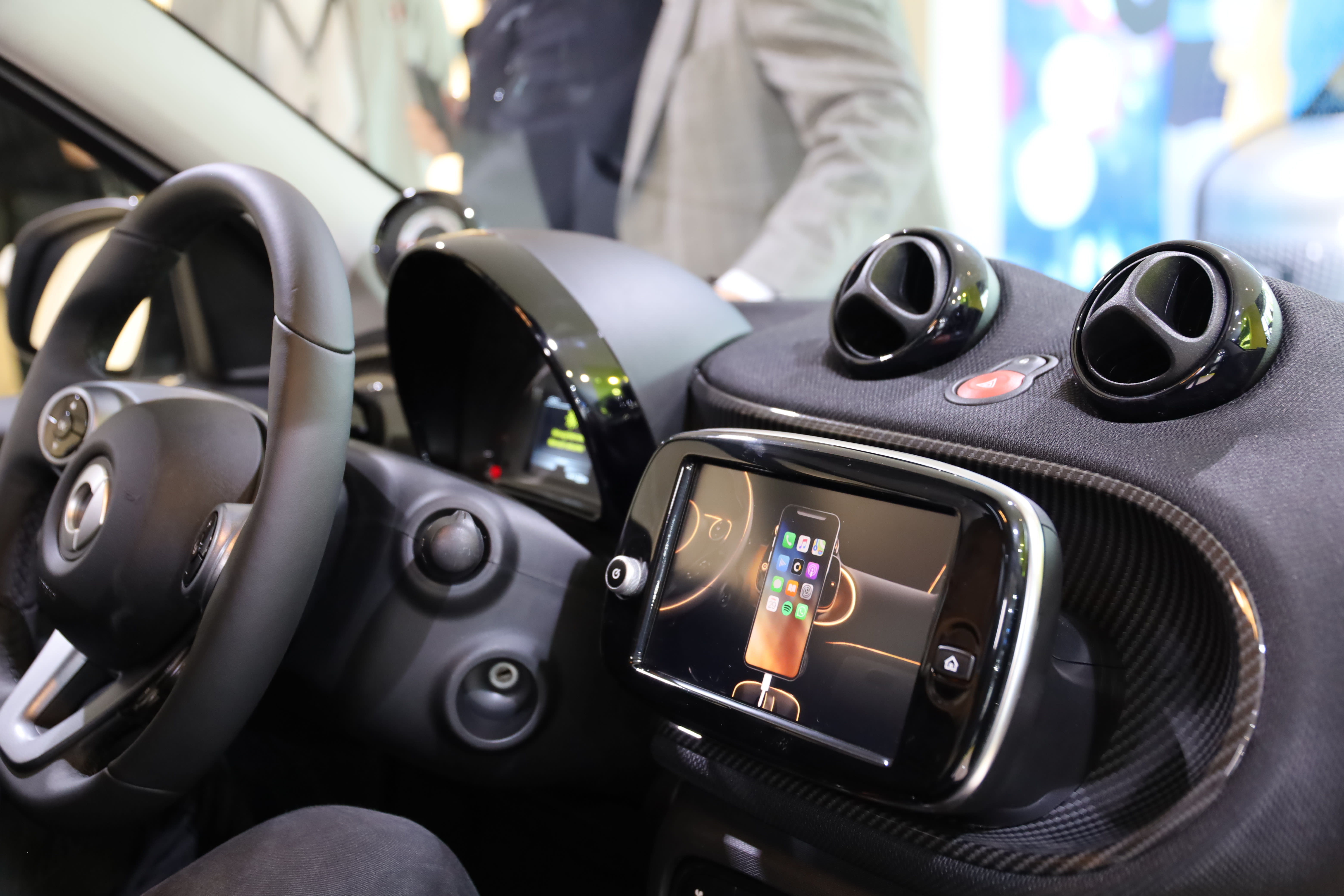
Practicality & Boot Space
It’s unclear if anybody has ever made bold claims about how wide their rear doors open, but Smart has smashed it with the Forfour. While most cars make do with doors opening to 70, or maybe 75 degrees, the Forfour’s swing out to 85 degrees. As sales pitches go, it’s not the most dramatic, but it’s a sensible, practical touch that makes getting in and out of the compact car much easier.
Once you’re in, you’ll find the rear seats to be a tad tight, with little legroom and only enough width for two. However, the headroom is generous, even with the panoramic roof. In the front seats, there are no complaints; space is plentiful for all.
The boot measures a meagre 185 litres, which is smaller than you’ll find in the equally compact Skoda Citigoe iV or Volkswagen e-up!. The rear seats do fold down though and create a usefully flat floor that will extend the boot from being able to take a couple of Ryanair-friendly cabin bags to a British Airways friendly couple of suitcases and hand luggage.

Safety
It’s six years since EuroNCAP tested the Forfour, back in the days where there was a petrol engine under the boot floor rather than an electric motor and some batteries, but the testing firm has carried out additional tests to ensure the solid four-star rating remains valid.
It missed out on a final star thanks to some pedestrian protection weaknesses, but passengers are protected well and there’s plenty of safety kit to avoid the accident in the first place.
Every model gets every bit of equipment, from automatic emergency braking and rear parking sensors to hill start assist and, interestingly, crosswind mitigation. The latter system detects when the car is being blown off-course, which is quite easy for a car that weighs just 1,200kg, and gently applies the brakes to individual wheels to pull the car back into line.
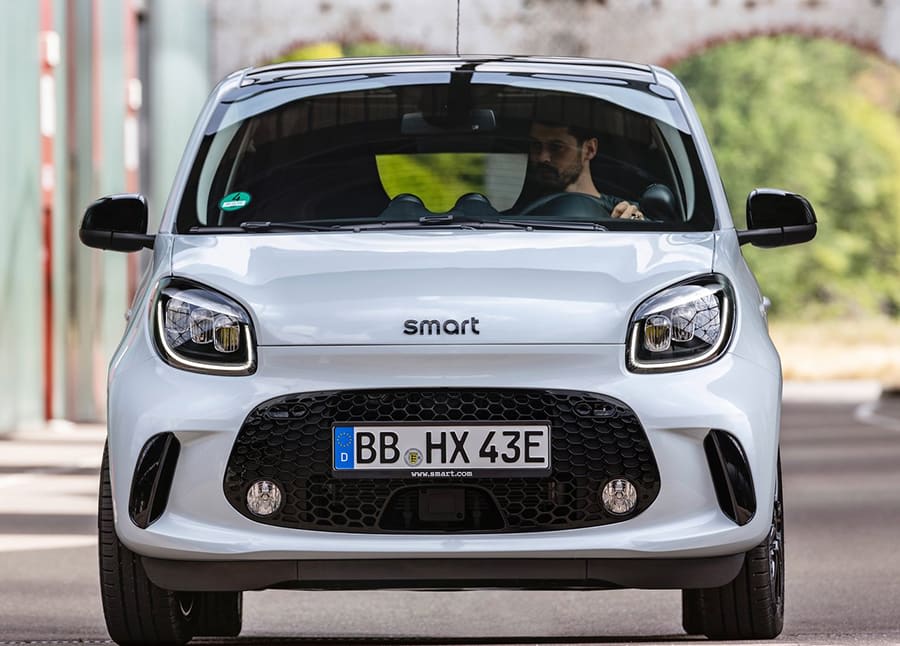
Options
There are three trim levels to choose from with the Smart Forfour, Passion, Pulse and Prime. The entry-level Passion has, of all things, a fabric-covered roof, and comes equipped with heated seats, climate control, and an infotainment system with navigation and smartphone mirroring.
Pulse adds larger wheels, a panoramic glass roof, and a rearview camera, while the Prime tops that with LED lights, automatic lights and wipers, leather seats, ambient lighting and, essentially, velour floor mats.
If you’re looking for options, you’re out of luck, unless you’re a fan of personalisation. The body panels and Tridion can be painted in a multitude of colours, with seven body colours and six Tridion colours available. Lava orange paint with a black Tridion works well, or perhaps you’re brave enough to swap the colours around and highlight that safety cell. Move away from the standard black on black and you’ll pay £325 for coloured body panels and £225 for the Tridion paint.
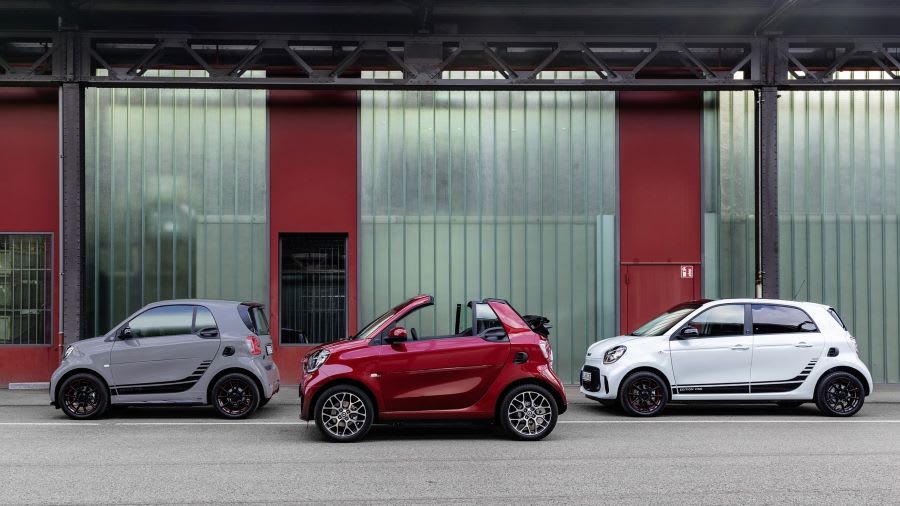
Rival cars
A few years ago, the Smart Forfour had few rivals, especially if you considered electrically driven ones. Now there’s a list as long as the car itself, and chief amongst those must be the Volkswagen e-up!, Skoda Citigoe iV and Seat Mii Electric.
This near-identical trio of cars cost a similar amount to the Smart, measure just 10cm longer, and are driven by a similarly powerful motor. However, the battery pack is larger and offers a range that, at 162 miles, is just over twice as far as the Forfours.
Style-conscious buyers will look fondly at the Honda e which is so cool it’ll stick to your tongue if you lick (please don’t) but it’s an expensive option. The new Fiat 500e will offer a similar package, with a 200 or so mile range while the Mini Electric adds excellent driving dynamics.
The Vauxhall Corsa-e and Peugeot e-208 siblings offer a more mainstream approach but, if you’re considering them, the Renault Zoe is probably closer to the Smart’s city-based character.
But the Forfour has an ace up its sleeve; despite its hefty sticker price, leasing costs are low. So low you’ll think there’s been an error, but rates from £140 a month undercut rivals by as much as 50%. For that kind of saving, I could possibly put up with a rough ride and limited range.

Verdict and Next Steps
Who knew that a Smart car would be the value proposition? The fact lease rates are so low alters your perception of the car; where you might have considered it a premium model where it falls short of its rivals, you can now frame it as a budget choice that gives you high-end style at the expense of range.
For many, the range limitations will be an issue and render the car unviable. However, if you’re limited to the city, want to avoid congestion charges, or just need to pop to the shops now and then, 80 miles will be more than enough.
Which means, for all it’s faults (and, as you’ll have read, there are many), it’s a tempting option. Just consider if you really need those rear seats, as the Smart Fortwo is even cheaper!
Where to next?
View latest Smart EQ ForFour Leasing Deals - from just £234.04 per month inc VAT**
Looking for a great leasing deal? Check out our incredible range of car lease deals
New city car? Read our latest Car Reviews and find the right model for you
Want to know more about leasing? Take a look at our comprehensive Leasing Guides
Interested in everything motoring? Why not catch up on all the latest Car Leasing News.
**Score based on Select’s unique meta score analysis, taking into account the UK’s top five leading independent car website reviews of the Smart EQ ForFour
**Correct as of 28/04/2022. Based on 9 months initial payment, 5,000 miles over a 48 month lease. Initial payment equivalent to 9 monthly payments or £2,106.36 Ts and Cs apply. Credit is subject to status.


















